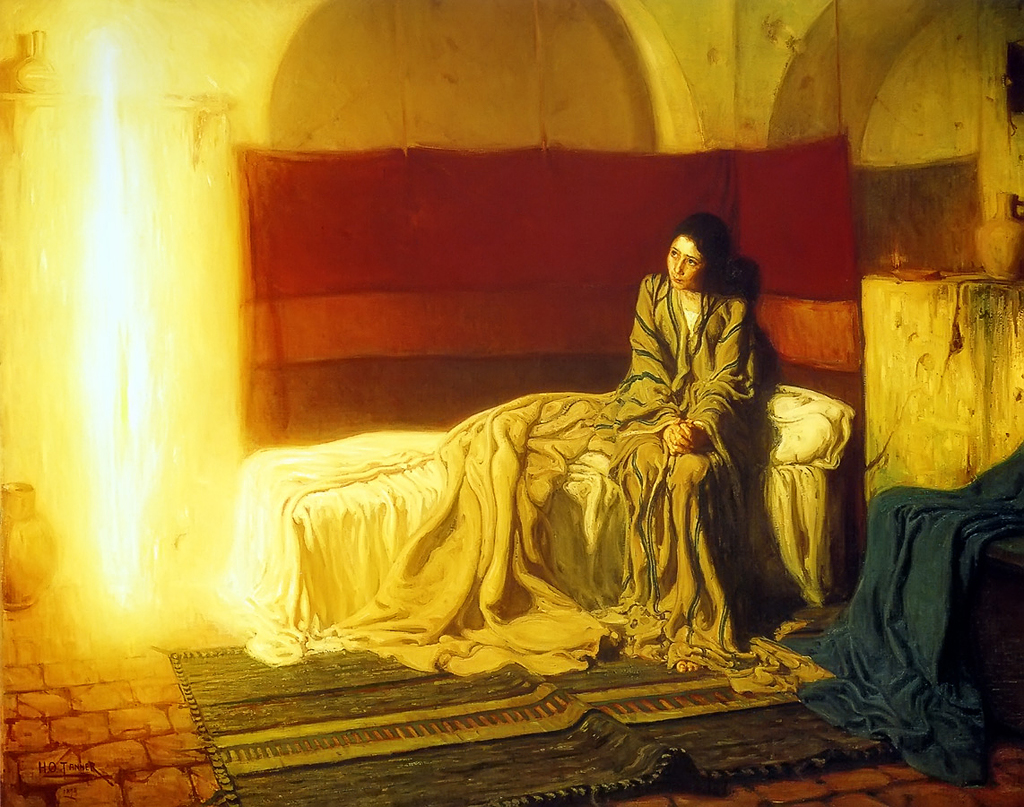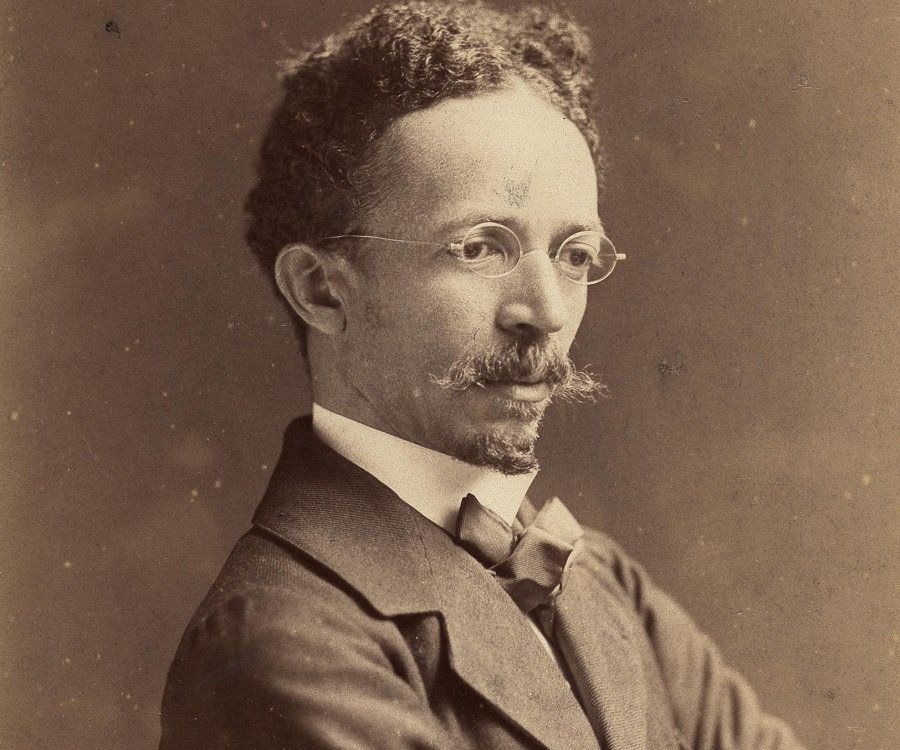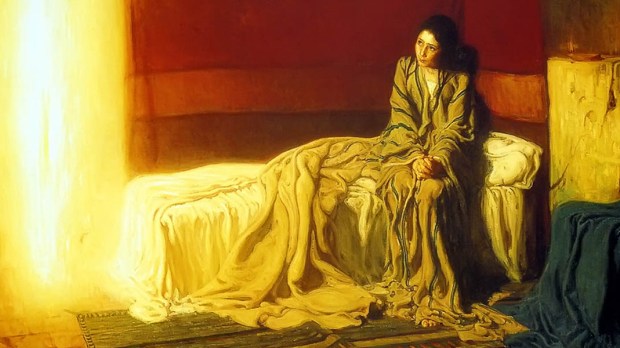Henry Ossawa Tanner (1859-1937), the first African-American painter ever to gain international acclaim, treats the classic Annunciation motif in a rather unconventional manner: he reckons the simplicity of the scene, rather than its theatrical recreation. In the intimacy of a chamber, Mary is portrayed as a dark haired Jewish peasant girl, seated at the edge of her couch in a striped crumpled attire. The orderly arrangement of the room, in contrast to her bed, suggests that Mary has suddenly been awakened in the middle of the night.
The blinding form of the angel is the only source of light in the room. As this infused flood of golden light falls onto Mary’s face, it allures us to where fear begins to give way to contemplation and contemplation to acceptance. It arrests our attention and ignites our imagination.

The Virgin wears no halo or celestial attribute. Her hands humbly clasped, her head tilted upwards and her eyes focused. She is clearly receptive and open to God’s will. Domesticity is now no stranger to epiphany. Peeking below her cascading drapery one finds Mary’s bare foot. This is an unusual Marian symbol, rarely found in classical depictions of the Annunciation. But for Tanner, it signified the humanity and simplicity of the Blessed Virgin.
Tanner employs a variety of other visual mediums in the painting to emphasize upon the transcendence of the event we are witnessing. Across Mary’s room are strewn three undecorated clay vessels. They acknowledge the presence and providence of the Trinity. The vessel also serves as a reminder of the Virgin herself who partook in the mystery of the Trinity as a “vessel of honor” to bring the Messiah into the world.

The next feature is equally intriguing. Having no physical appearance or angelic wings, Gabriel is rather depicted as a pillar of light. However, at a closer glance, one observes that this vertical beam intersects with the horizontal shelf to form a cross. It thus foreshadows the Crucifixion as it proclaims the Incarnation at the same time. The colors of the composition further embellish the liturgical and artistic beauty of the painting: red symbolizes love, white signifies purity, blue stands for wisdom, and gold is reminiscent for divinity.
Art often mirrors the life and imitates the artist’s experience. The paintings of Henry Ossawa Tanner also work as vignettes of his life. Even if internationally acclaimed, and although he was the son of a bishop of the African Methodist Episcopal Church, Tanner had nevertheless to face discrimination, and lived for most of his life in France rather than in his native Pittsburgh. To a certain extent, he found solace, reassurance and acceptance both in art and religion, as in this canvas: a work of art that preached the story of Christmas as it has rarely been done before, able to bring together in unity the Divine and the human, the unseen and seen, mystery and reality.
Joynel Fernandes is the Assistant Director of the Archdiocesan Heritage Museum, Mumbai, India. She is currently pursuing her Masters in History. Researching on Church History and Church art is her passion. She hopes to make its understanding more approachable to younger generations.
This article has been kindly granted to Aleteia by our partners in India, Indian Catholic Matters. We encourage you to visit their full website, here.

